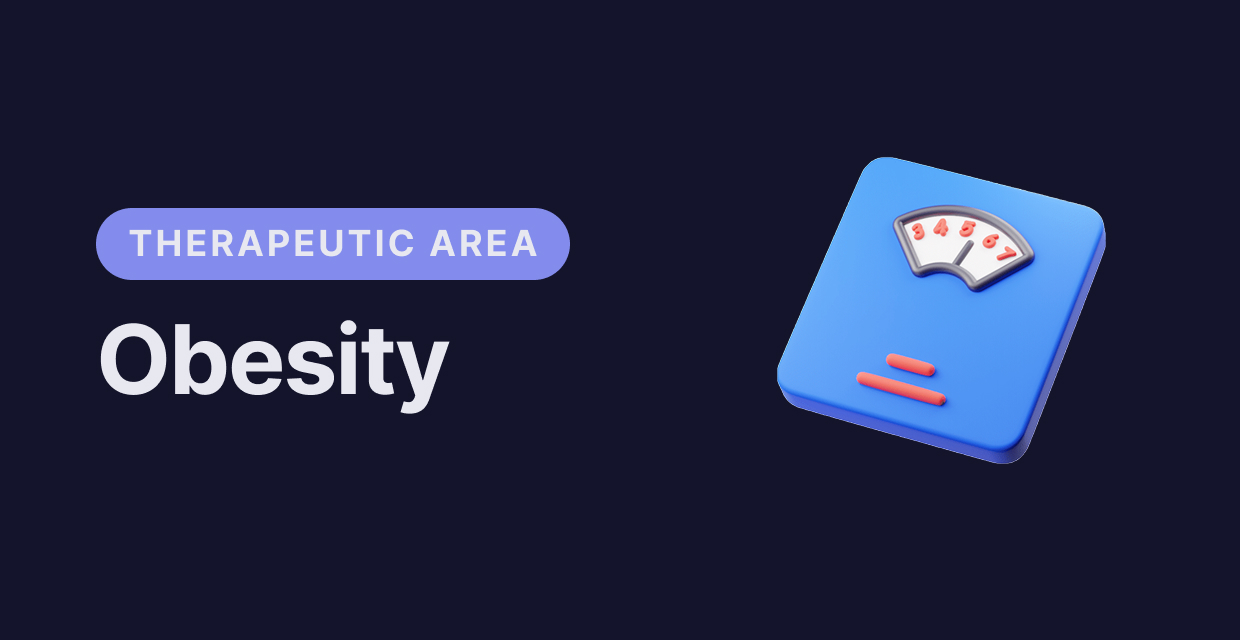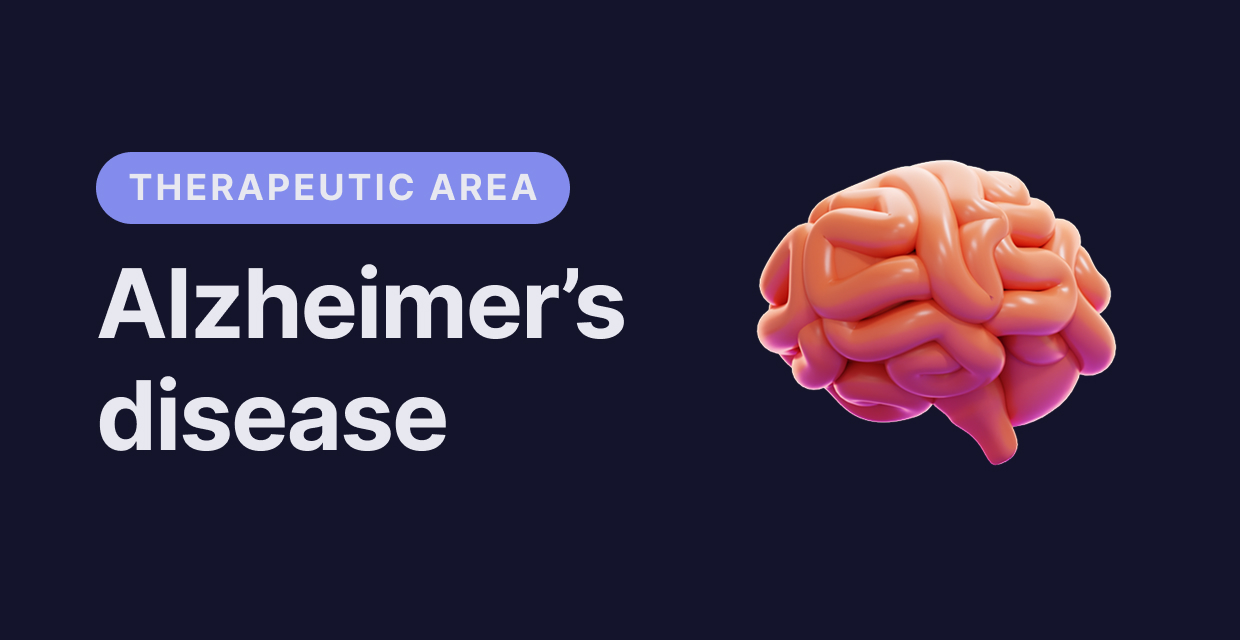Kendi Kendini İzlemeyi Oyunlaştırmak için Bir Çerçeve
Oyunlaştırma, davranış değişikliği vaat eden ve sağlık hizmetlerine uygulanabilecek bir dizi yöntem sunmaktadır.

Kaynak: Elsevier
Özet
Diyabet, dünyada en yaygın görülen kronik hastalıklardan biridir. Suudi Arabistan, diyabetin en yaygın olduğu ülkelerin başında gelmektedir. Diyabetle yaşamak, günlük yaşamın çeşitli yönlerinde büyük bir özen ve öz yönetim becerileri gerektirir. Öz bakım ve yönetim, kan şekeri seviyelerinin ve gıda alımı gibi diğer ilgili bilgilerin kayıtlarının tutulmasından, durumla başa çıkmak için gereken duygusal ve sosyal desteğe sahip olmaya kadar uzanmaktadır. Hastaların diyabeti kendi kendilerine yönetebilecekleri bir dizi yol olsa da, bunlar ilaç tedavisine uyumu garanti etmez veya öz yönetim becerilerini geliştirmez. Dahası, mevcut araçlar ve topluluklar Suudi hastalar için mevcut değildir. Diyabetin daha iyi yönetilmesini teşvik etmek amacıyla, oyun dışı ortamlarda oyun öğelerinin kullanılması olan Oyunlaştırma'nın kullanılmasını öneriyoruz. Teknolojiden çok psikolojiyle ilgili olduğu için kullanıcıların davranışlarını etkileyebilir ve durumlarını daha iyi yönetmeleri için onları motive edebilir. İçerdiği ödüllendirici unsurlar, kullanıcıları başlatmakta veya sürdürmekte zorlandıkları sağlıklı davranışlara motive etmeye yardımcı olabilir. Sağlık hizmetleri de dahil olmak üzere bir dizi ortama uygulanmış ve katılımı artırma, insanları motive etme ve davranış değiştirme açısından olumlu sonuçlar vermiştir. Bu nedenle, bu araştırmada Suudi Arabistan'daki genç yetişkinlere diyabetin öz yönetiminde yardımcı olmak için "Şükür Çarkı" adlı kavramsal bir çerçeve öneriyoruz. Çerçeve, oyunlaştırma ve davranış değişikliği yöntemleri arasındaki bağlantıyı vurgulamaktadır. Bu çerçeve, literatürde yer alan ve diyabetin öz yönetiminde oyunlaştırmanın davranış değişikliği ya da olumlu davranışların pekiştirilmesi amacıyla kullanılması için gerekli olduğuna inanılan bir dizi unsuru içermektedir.
Sağlık Hizmetlerinin Oyunlaştırılması
"Oyunlaştırma" terimi, oyun dışı ortamlarda oyun unsurlarının ve geliştirme mekaniğinin kullanılması anlamına gelir. Davranış değişikliklerini teşvik etmek için katılım, ödül ve teşvik ilkelerini birleştirir, kullanıcıları yeni beceriler öğrenmeye veya katılımlarını eğlenceli bir şekilde artırmaya motive eder. Davranış değiştirme kabiliyeti ve getirdiği keyif unsuruyla oyunlaştırma, önceden belirlenmiş amaç ve hedeflere ulaşılmasına yardımcı olabilir. Bu durum, toplumun kurallar ve cezalar, kazananlar ve kaybedenler, yarışmalar ve işbirlikleri, bireyler ve takımlar açısından oyunlara benzer bir şekilde işlediği gerçeğiyle desteklenmektedir. Bu özelliklerin, hastalık önleme davranışları ve hastalık yönetimi de dahil olmak üzere sağlık dijital araçlarında ve hizmetlerinde kullanılmasının kullanıcılar üzerinde olumlu bir etkisi olacağı düşünülmektedir2. Dahası, oyunlaştırma uzmanı Zichermann da oyunlaştırma kavramının sağlık hizmetleri web siteleri ve uygulamalarında kullanılmasının doğal bir uyum olduğunu savunan diğer kişiler arasında yer alıyor.
Oyunlaştırma temelde bir motivasyon aracıdır. Genel olarak motivasyon, kişisel hedeflere ulaşmak, kişisel ihtiyaçları karşılamak, lider beklentilerini yerine getirmek ve ödüller veya teşvikler kazanmak için birçok şekilde ortaya çıkabilir. Oyunlaştırma sağlık hizmetlerinde doğru bir şekilde kullanılırsa, insanları sağlıklarıyla ilgili daha iyi kararlar almaya motive edebilir. Kronik bir hastalığa sahip olmak çok fazla öz bakım gerektirir. Hastaların zamanı, yapmaları gereken birçok tekrarlayan görev nedeniyle tükenmektedir. Bunlar arasında ilaç almak, gıda alımlarını, egzersizlerini ve diğerlerini not tutmak sayılabilir. Elektronik araçlar ve hizmetler bu bölümde yardımcı olabilir. Hastaların kendi kendilerini yönetmek için daha az ve daha verimli zaman harcamalarını sağlar. Jane McGonigal'ın Reality is Broken adlı kitabında belirttiği gibi, "Günlük aktivitelerimizi ne kadar çok izlemeye ve kendi kendimize raporlamaya başlarsak... o kadar çok ilerleme kaydedebilir, hedefler belirleyebilir, zorlukları kabul edebilir ve birbirimizi destekleyebiliriz...". Oyunlaştırılmış hizmetler, kullanıcıların ilgisini çekme ve onları motive etme becerileriyle sağlık alanında yüksek potansiyele sahiptir. Öz yönetimin etkinliğini ve ilaç tedavisine uyumu artırabilirler. Dahası, hastaların duygusal durumunu iyileştirebilir. Bu nedenle, bir dizi sağlık uygulaması tarafından benimsenmiştir.
Genellikle ödüllerin insanlarda hoşlanma ve haz duyguları bıraktığına inanılır. Bir yandan olumlu pekiştireçler, istenen davranışın ardından bireye verilen ve tercih edilen sonuçlardır. Örneğin, satışları arttırmak için iş yerinde ikramiye almak. Öte yandan, olumsuz pekiştireçler, istenen davranışın ardından istenmeyen veya hoş olmayan bir sonucun ortadan kaldırılmasıyla karakterize edilir. Böylece, olumsuz bir şey ortadan kaldırıldıkça davranış güçlendirilir. Örneğin üniversitelerde öğretim olumsuz bir pekiştireç olarak kullanılır. Öğretim görevlisi ne kadar çok yayın yaparsa, o kadar az ders saati alır. Oyunlaştırmaya uygulandığında, ödüller kullanılarak olumlu pekiştirme geliştirilebilir. Diyabet gibi kronik bir hastalığı yönetmenin sıkıcı ve tekrarlayan görevlerini ödüllendirici ve daha ilgi çekici hale getirebilir. Bu da, kullanıcıların ihtiyaçlarını karşılamayan kalitesiz tasarımlar nedeniyle yavaş olan dijital sağlık hizmetlerinin benimsenmesini artırabilir. Nitekim yakın zamanda yapılan bir araştırmada, katılımcıların %75'i, özellikle sağlıkla ilgili görevlerin yeniden yerine getirilmesine yardımcı olması halinde dijital sağlık hizmetlerini kullanmaya ilgi göstermiştir.
Bir hastayı ilaçlarını aldığı için ödüllendirmenin, ilaçlarını düzenli olarak almadığı takdirde cezalandırmaktan daha etkili olduğu düşünülmektedir. Oyunlaştırma, diyabet ve kendi kendini yönetme ile ilgili bazı olumsuz çağrışımları değiştirmede kritik bir rol oynayabilir. Aslında oyunlaştırma, egzersiz yapmayı, daha sağlıklı seçimler yapmayı, ilaç tedavisine bağlı kalmayı ve hastalık yönetimini eğlenceli ve ödüllendirici bir deneyime dönüştürebilir. Olumlu pekiştirme ile oyunlaştırmanın başarılı bir örneği, kullanıcılara sağlık hedeflerine ulaşmalarında yardımcı olmak için ilgi çekici ve etkileşimli bir deney sağlayan bir kişisel gelişim aracı olan web tabanlı ve mobil uygulamaSuperBetter'dır. Uygulama, kullanıcıların "arayışlarını" takip etmekte ve hedeflere her seferinde bir adımda ulaşmaları için günlük ve haftalık yapılacaklar listeleri sunmaktadır.
İlgili Davranış Teorileri
Oyunlaştırmanın hedeflerinden biri de kullanıcı davranışını yönlendirmektir. Ancak sağlık hizmetlerinde davranışları etkilemek kolay bir iş değildir. Bazı araştırmalara göre, dijital sağlık uygulamaları ve hizmetleri kullanıcılarının yalnızca %10'unu etkilemektedir. Bu nedenle, kullanıcı davranışını etkilemek için davranışın nasıl oluştuğunu ve buna katkıda bulunan faktörlerin neler olduğunu anlamak gerekir.
Stanford Üniversitesi'nde araştırmacı olan B.J. Fogg (2009), davranışın nasıl oluştuğunu açıklayan bir model önermektedir22. Fogg Davranış Modeli (FBM) insan davranışının üç unsurun bir sonucu olduğunu göstermektedir. İlk unsur, kişinin belirli bir davranışı gerçekleştirme arzusuna sahip olması anlamına gelen motivasyondur. İkinci unsur, kişinin davranışı gerçekleştirme kapasitesine sahip olduğu yetenektir. Son unsur ise kişinin farklı ipuçları aracılığıyla davranışı gerçekleştirmesi için tetiklenmesi anlamına gelen tetikleyicidir. Ayrıca Fogg, bir davranışın ortaya çıkması için bu unsurların aynı anda gerçekleşmesi gerektiğini belirtmektedir.
Ayrıca, davranışları etkilemek iki aşamalı bir prosedürdür. Hem yeni bir davranış yaratmayı hem de istenmeyen davranışı ortadan kaldırmayı gerektirir. İnsanların davranışlarını değiştirmeyi seçtikleri bir dizi durum vardır. Örneğin, bazı insanlar daha sağlıklı olmak için içsel olarak motive olurlar, bu nedenle kendi başlarına egzersiz yapar ve sağlıklı beslenirler. Davranış değiştirmenin diğer yolları, kendini gerçekleştirme, çevre değişikliği veya bir dizi adımla yeni bir davranış geliştirmekten gelir. Sonuncusu "Minik Alışkanlıklar" olarak adlandırılır ve günlük rutinde küçük değişikliklerden oluşan planlı bir dizi, istenen bir davranışa ulaşmak için minik alışkanlıkların benimsenmesiyle sonuçlanır. Minik Alışkanlıklar yönteminin davranış değiştirmede başarılı olduğu kanıtlanmıştır. Küçük değişikliklerin kabul edilmesinin günlük davranışlardaki büyük değişimlerden daha kolay olduğu gerçeğine dayanır.
Psikolog Csikszentmihalyi (1997) Akış Durumunu bir faaliyete/oyuna kendini kaptırma ve bağlanma zihinsel durumu olarak tanımlamıştır26. Akış durumunda, kullanıcı içsel olarak motive olur ve kendini tamamen yaptığı şeye kaptırır. Böylece, zaman ve kullanıcının etrafındaki fiziksel dünya önemsiz hale gelir. Dahası, ilgi çekici video oyunları kullanıcıları akış durumuna sokabilir. Ancak, oyun aktiviteleri kullanıcıların beceri seviyesine göre tasarlanmalıdır. Bu nedenle, kolay görevlerle başlanmalı ve kullanıcıların becerileri arttıkça zorluk derecesi de kademeli olarak artırılmalıdır21. Bu, akış durumunu devam ettirir. Öte yandan, eğer oyun bunu başaramazsa, kullanıcı ya çok basitse sıkılacak ya da çok zorsa oyunu bırakacaktır.
Daniel Pink "Drive: Bizi Motive Eden Şeyler Hakkında Şaşırtıcı Gerçek" kitabının yazarı Daniel Pink, motivasyonun içsel olduğunu ve üç unsur tarafından yönlendirildiğini savunmaktadır. Birincisi, özerklik, insanların faaliyeti ne zaman ve ne düzeyde gerçekleştirmek istedikleri konusunda tam kontrole sahip olmalarıdır. Oyunlarda, özerkliğin bileşenlerinden biri Akış Durumuna girmektir. İkincisi, ustalık belirli bir faaliyette daha iyi olmaktır. Örneğin, oyunlarda ustalık hissine, oyun oynama ve hedeflere doğru ilerlemede gelişme yoluyla ulaşılabilir. Son olarak, amaç insanların bir faaliyeti yapmak için bir nedene sahip olmasıdır. Ayrıca statü de bir başka güçlü motivasyon aracıdır; çünkü insanlar imajlarına önem verirler.
Davranışları yönlendirdiği bilinen teorilerden biri de "Dürtme" teorisidir. Zorlama olmayan bir eyleme yönelik olumlu pekiştirme ve dolaylı sinyallerdir. Dürtme teorisi davranışları yönlendirmek için kullanılır ve politik ve ekonomik ortamlarda uygulanmıştır. Belirli bir davranışa giden en basit yolu yaratır. Dürtme teorisinin kullanılması, oyunlaştırmanın kullanıldığı yerlerde iyi bir ortam yaratabilir. Ödüller ve teşvikler vermenin yanı sıra davranışları istenen davranışlara 'dürtmek'. Ayrıca Lithium'da araştırmacı olan Michael Wu, oyunlaştırmanın en basit haliyle FBM'deki motivasyon unsurunu kapsadığını ve dürtme teorisinin de diğer iki unsur olan yetenek ve tetiklemeyi kapsadığını savunmaktadır30. Bir dürtme tasarlamak küçük bir alışkanlık tasarlamaya benzer; basit seçimler olmalıdır. Ancak, dürtme teorisi tasarımcının belirli bir eyleme yol açan ortamı ve bağlamı basitleştirmesini gerektirir. Öte yandan, minik alışkanlıklar yöntemi, istenen davranışı benimsenmesi kolay küçük alışkanlıklara ayırır.
Şükür Çarkı
Sağlıklı bir yaşam tarzı sürdürmek övgüye değerdir. Zichermann'a (2011) göre, oyunlaştırma teknolojiden çok psikolojiyle ilgilidir (%75'e %25). Davranış değişikliğini teşvik etmek veya kullanıcı katılımını sağlamak için insan doğasında var olan tanınma dürtüsünü ve anında olumlu geri bildirim ihtiyacını kullanır. Motivasyon yoluyla, oyunlaştırma bazı hedeflere ulaşılmasını sağlayabilir. Hedef belirleme, motivasyon ve ilerlemeyi izleme kavramları üzerine inşa edilmiştir. Ancak, oyunlaştırmayı kullanan bazı sistemler uzun vadede başarılı olamamaktadır. Bu, yalnızca puanlara ve rozetlere güvenilmesinin bir sonucudur. Puanlar ve rozetler oyunlaştırmanın bir parçası olsa da, dikkate alınması gereken başka önemli oyun teknikleri de vardır. Bu nedenle, oyunlaştırmanın tüm avantajlarından faydalanmak için uygulandığı ortamı anlamak gerekir; böylece belirli oyunlaştırma teknikleri bu özel ortama göre uyarlanabilir ve uygulanabilir. Bu nedenle, bu araştırmada, Suudi Arabistan'daki diyabet hastalarına öz-yönetimde yardımcı olmak, öz-yönetimde olumlu davranışları pekiştirmek ve etkileşimde bulunabilecekleri bir alan sağlamak amacıyla oyunlaştırmayı uygulamak için kavramsal bir çerçeve olarak "Şükür Çarkı "nı öneriyoruz [Şekil 1]. Çerçeve unsurları, olumlu davranışları güçlendirmek ve diyabetin kendi kendine yönetimini daha kolay, eğlenceli ve ödüllendirici hale getirmek için seçilmiştir.
Şükür Çarkı, oyunlaştırılmış bir diyabet öz yönetim sistemi tasarlamak için bir kılavuz sağlamaktadır. Bu nedenle, 'eğlence' ve 'öz yönetim' unsurları esastır. Dahası, 'eğlence' unsurları oyunlaştırmanın bir parçasını temsil eder ve rozetler, puanlar, meydan okumalar ve rekabeti içerir. Öte yandan, 'kendi kendini yönetme' unsurları şunları içerir: kayıt defteri, verilerin görselleştirilmesi ve trend uyarıları. Bunlar, kullanıcıya kan şekeri test sonuçlarını düzenli olarak kaydetmesi ve ayrıca gıda alımı gibi sonuçlarıyla ilgili bilgileri kaydetmesi için bir araç sağlayan unsurlardır. Ayrıca, kaydedilen veriler kullanıcıya görsel olarak sunularak herhangi bir örüntüyü tanımlamasına ve ilerlemesini kolayca izlemesine yardımcı olur.
Oyunlaştırmanın başarısının en önemli yönlerinden biri, kullanıcılar için anlamlı ve ilgili olan gerçek zamanlı geri bildirim sağlamaktır. Geri bildirim, kullanıcılara performansları hakkında anında geri bildirim veren ödüller ve teşvikler de dahil olmak üzere birçok şekilde temsil edilebilir. Liderlik tablosunda seviye atlamak veya puan kazanmak buna bir örnektir. Övgü, diyabetik hastalara verilen geri bildirimin bir parçası olsa da, tek geri bildirim türü değildir. İyi eylemlerin övülmesi hastalar üzerinde büyük bir etki yaratabilir; ayrıca çerçevenin büyüme yönünün bir parçası olan test sonuçları ve yönetim alışkanlıkları hakkında genel geri bildirim de verilebilir. Kan testlerinin grafikleri açısından geri bildirim sağlayarak kullanıcı kendi durumu hakkında bilgi edinecek ve herhangi bir kalıbı tanıyacaktır. Ayrıca, kan şekeri ortalamadan düşük veya yüksek olmaya devam ettiğinde uyarılar sağlamak da bu geri bildirimin bir başka örneğidir.
İki tür motivasyon vardır: bir şeyi yapmak için doğuştan gelen bir arzudan kaynaklanan içsel ve yalnızca bir ödül varsa bir şeyi yapmak olan dışsal. Ödüllerin kullanılması başlangıçta dışsal motivasyon olarak işlev görecektir. Bununla birlikte, görsel temsil gibi unsurlar kullanıcıların kendilerini izleme ve durumlarını daha iyi anlama arzularını artıracağından, Şükür Çarkı'nın uygulanmasıyla kullanıcılar kendi içsel motivasyonlarını geliştireceklerdir. Test sonuçlarını görselleştirme olanağı olmadan kaydetme eyleminin aksine, bu kendi başına sıradan bir görevdir. Ayrıca, kullanılan ödüllerin, kullanıldığı kültüre veya gruba göre uyarlanması ve böylece kullanıcı için alakalı ve değerli hale gelmesi gerektiğine dikkat etmek önemlidir.
Ayrıca, sosyal boyut oyunlaştırmanın başarısı için çok önemlidir. "Eğlence" unsurlarının değerine değer katar ve diyabetle başa çıkmanın psikolojik yönlerini kapsar. Önceki bölümlerde diyabetin nasıl klinik depresyona yol açabileceği ve bunun ne kadar yaygın olduğu ayrıntılı olarak ele alınmıştı. Bu nedenle, paylaşımda bulunabilecekleri ve akranlarından destek alabilecekleri bir ortam sağlamanın önemli olduğunu anlıyoruz. Ayrıca, Maslow'un İhtiyaçlar Hiyerarşisi aidiyet duygusuna sahip olmanın önemine işaret etmektedir32. Zynga'nın FarmVille gibi oyunları bunu anlamış ve insanların sosyal uyum ve kabul görme ihtiyacını karşılayan sosyal oyunlar sunmuştur30. Suudi Arabistan'da sosyal medya genel olarak çok popülerdir, ancak diyabet hastaları için sosyal medya veya çevrimiçi alan eksikliği vardır. Bu nedenle, çevrimiçi bir topluluk sağlamak faydalı olabilir ve hastaların ihtiyaç duyduğu sosyal desteği artırmaya yardımcı olabilir ve hastaların yapması gereken daha fazla görev yaratmadan hastalığı yönetmeye farklı bir bakış açısı katabilir.
Bununla bağlantılı olarak, Maslow'un çalışmalarına dayanarak, insanların saygı görmeye, başarıları hakkında iyi hissetmeye ve öz değer sahibi olmaya ihtiyaç duyduklarına inanılmaktadır. Aslında, insanlar tanınmak ve değer görmek için bir şeyler yaparlar. Neyse ki, çoğu oyunlaştırma unsuru, doğru bağlam için tasarlandığında saygınlık artırıcıdır. Dahası, kullanıcılar adlarının bir liderlik tablosunda yükseldiğini, ilerleme çubuklarının ilerlediğini veya bir dizi rozet biriktirdiklerini gördüklerinde, tanınma ihtiyaçlarını karşılayacak ve genel olarak öz saygılarını olumlu yönde etkileyecektir.
Ayrıca, oyunlaştırılmış sistemde kullanıcının ve hedeflerinin ve yeteneklerinin temsil edilmesi önemlidir. Dahası, kullanıcıların kendilerini temsil etmeleri kısmen özelleştirilmiş profiller ve avatarlar sağlanarak gerçekleştirilir. Bu, sistemle ilişki kurma becerilerinde artışa yol açabilir. Buna ek olarak, kullanıcılara glikoz seviyesi hedefleri gibi kendi hedeflerini belirleme şansı vermek, özerklik duygularını geliştirecek ve deneyimi kendilerine göre uyarlayacaktır.
Son olarak, oyunlaştırma etkilerinin sürdürülebilirliğini sağlamak için The Wheel of Sukr'a bir dizi unsur (tetikleyici, akış, hikaye/tema ve dürtme) eklenmiştir. Bu unsurlar oyun tasarımı ve davranış teorilerinden türetilmiştir. Akış ve bir hikaye veya temaya sahip olmanın video oyunlarında kullanıcıların uzun süreli dikkatini çekmede etkili olduğu kanıtlanmıştır. Öte yandan, tetikleyici ve dürtme, kullanıcının davranışını istenen yöne kaydırdığına inanılan davranışsal teorilerdir. Bu bağlamda, dürtme teorisi ve tetikleyicilerin kullanılması diyabet yönetiminde olumlu davranışları pekiştirebilir.
Sonuç ve gelecekteki çalışmalar
Sonuç olarak bu makale, oyun tekniklerinden yararlanan ancak kendi başına bir oyun olmayan oyunlaştırma kavramını gözden geçirmiştir. Davranış değişikliğini teşvik etmek veya kullanıcı katılımını sağlamak için insan doğasında var olan tanınma ve anında olumlu geri bildirim dürtüsünü kullanır. Dahası, oyunlaştırmanın özellikle sağlık hizmetlerinde davranış değiştirmek için davranışsal içgörülerle birlikte kullanılabileceği gösterilmiştir.
Ayrıca Suudi Arabistan'da öz yönetim uygulamalarına ihtiyaç duyulmaktadır. Ülkede yüksek oranda diyabet hastası bulunmaktadır (2013 yılında 3,6 milyon) ve diyabet prevalansında en üst sıralarda yer alan ülkelerden biridir. Diyabet hastası olmak, sağlıklı bir yaşam sürdürmek için çok sayıda öz yönetim becerisi gerektirir. Suudi Arabistan'da diyabetin öz yönetiminin oyunlaştırılması olumlu bir etki yaratabilir. Diyabeti yönetmenin sıkıcı ve tekrarlayan görevlerini daha ödüllendirici ve ilgi çekici bir faaliyete dönüştürebilir. Bunun yanı sıra bu hastalıkla ilgili olumsuz çağrışımları da değiştirebilir.
Bunun ışığında, diyabet yönetiminde oyunlaştırma kavramını uygulayan kavramsal bir çerçeve olan şükür çarkını önerdik. Bu çerçeve sekiz unsurdan oluşmaktadır: kendini izleme, sosyalleşme, kendini temsil etme, oyunlaştırma, saygınlık, motivasyon, sürdürülebilirlik ve büyüme. Unsurların her biri bir dizi alt unsura sahiptir. Gelecekte, çerçeve unsurları uzman görüşmeleri ve anketler yapılarak doğrulanacaktır.




